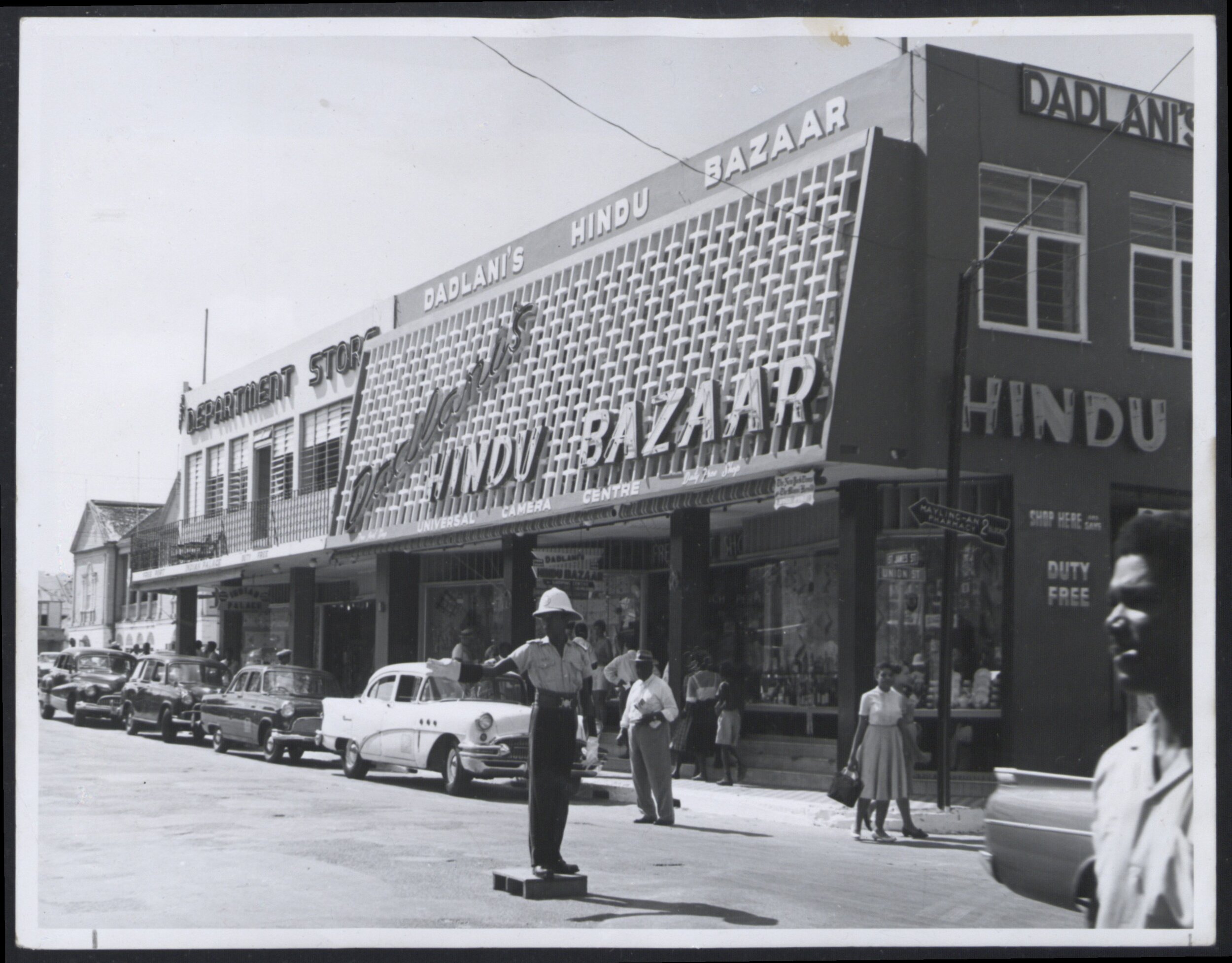
Public Articles
Orientalizing Caribbean Society
B. Samaroo, 'Orientalizing Caribbean Society', THE ARTS JOURNAL, Vol. 11, 2018.
These ordinary Indian women who registered themselves as indentured labourers were far more disadvantaged than the Sita of the Ramayana. There were many Ravanas (symbolic) in the lives of the women; their circumstances, the arkatias (recruiters), the crew, Indian men and white overseers in the sugar plantations. (Tiwari: "Indian Indentured Women," in A. Pantle (ed.), J omen in the Indian Diaspora. 2018, p.58).
Out of this maelstrom of misery, Indian women were able to create opportunities. Visiting colonial missionaries and travellers noted that they competed with men for demanding labouring jobs such as loading sugarcane punts or animal-driven carts, carrying smelly manure to the fields, or working as paniharis (water carriers). All this field work was, in the evening followed by another day's work in the home: preparing meals, tending children and general housekeeping. In these functional ways, they upheld their world. At the same time, the scarcity of women gave them the advantage of choice in marriage arrangements, making the Indian custom of dowry irrelevant. Women could now embark on occupations which were outside of their traditional caste-driven jobs, creating new opportunities for themselves and their children. They clearly understood importance of education and ensured the attendance of their children in Canadian Mission schools from the 1870's as that mission spread its wings to Guyana, St. Lucia, Granada and Jamaica. The women were major quiet supporters of masjids and mandirs throughout the region, where spiritual sustenance resided. When, from the 1950's state support was given to non- Christian schools, the women were in the forefront of the pursuit of learning. Many of them were among the first teachers in these schools and these encouraged girls to join.
What were the spiritual values which the Chinese and Indians brought to the Caribbean? These cultural values were certainly instrumental in influencing the manner of their physical transformation of the region's landscape. The Chinese came with an ethical code, devoid of deities, based on Confucianism and Taoism. This moral guide concentrated on ancestor-worship, filial piety, the importance of the clan and family and the benefits of hard work, courage and fearlessness. In Cuba, where the mass of Chinese was substantial, major aspects of the culture were maintained. Chinatown became a hub of activity in Havana, Chinese food became part of the diet and the Lion Dance part of the Cuban Carnival. Chinese Cubans fought in the Ten Years War (1868-78) which marked the start of the revolutionary struggle against Spain. This participation facilitated Chinese integration into Cuban society. As many Chinese became Roman Catholics, they created the Saint San Fan Con which was a syncretic combination of the warrior/sage Kuan Kong with the Christian idea of the saint. The Cuban Revolution of the 1960's with its atheist ideology put a damper on Chinese cultural practices but when the Cuban constitution was revised in 1992, religious freedom was restored. This was followed by the revival of Chinese associations and traditions such as the revival of San Fancon and Qingming (day of the dead). Havana's Chinatown was revived and is today a popular tourist attraction (Encyclopaedia of Caribbean Religions, p. 159f).
In the rest of the Caribbean, the small numbers of Chinese and the paucity of Chinese women rendered the preservation of Chinese culture a formidable challenge. In that situation, they have been moving from pillar to post as they sought to anchor themselves in this new world. Generally, they escaped from plantation labour as quickly as possible buying out their remaining estate years and assisting others to do so. A few tried to remain in agriculture as 170 of them did in 1865 in Hopetown, Guyana under the direction of a Christian missionary. Ten years later this population had grown to 500 and they were producing pork, ginger, sweet potatoes and charcoal. By 1914, however, this experiment had collapsed. Wood for charcoal had run out, the lands were flooded and the planter-led legislature paid no attention to non-sugar activities. Some Chinese settled in the upper Corentyne in villages such as Hong Kong and Chinaland. Other Chinese migrated to Panama, to the gold fields of Suriname, and Cayenne and to commerce in Jamaica and St. Vincent. In Guyana, state favouritism to the Portuguese enabled them to dominate the commerce so that there was a Chinese exodus to Trinidad from the 1880's. Here, they were able to establish a foothold in commerce. In Jamaica, they were not as welcome. There were anti-Chinese riots in 1918 and again in 1938. In a moving re-creation of the travails of the Chinese shopkeeper in Jamaica, the novelist Patricia Powell tells the sad story of Mister Lowe whose shop was burnt to the ground. In the evening of his life he laments that he had neglected to tell his daughter about her ancestry in Kwantung, the home of so many houseboats and junks:
He had never celebrated her birthdays or lunar new years and the other festivities of his birthplace. He had never instilled in her filial piety or ancestor worship, never acknowledged the elaborate rites and celebrations connected with marriage and death, with her very birth, her existence in the world. ( The Pagoda, 1998, p.75).

